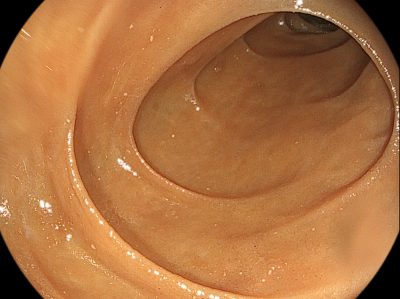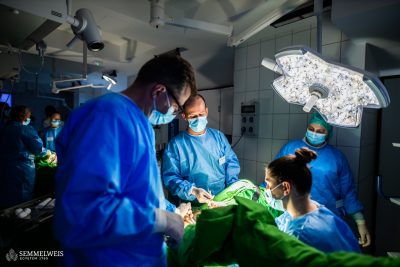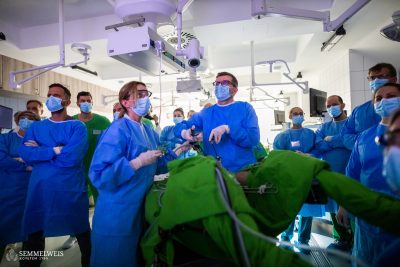Hands-on Cadaver Trainings and Surgical Research
Our team considers organizing medical vocational and professional training courses, as well as conducting tests related to medical device development as its primary focus, uniquely for over a decade in Hungary.

Gastrointestinal “hands-on” endoscopy training on new-generation human cadavers
CADAVER COURSES
We strongly believe it is essential for every physician working in manual specialties to have the opportunity to gain practical experience on human cadavers, under real anatomical conditions, prior to treating their own patients. To facilitate this, we provide the necessary infrastructural and clinical anatomical background, with our course instructors selected from renowned representatives within the respective clinical field.
By employing special preservation procedures that maintain color and consistency similar to living tissues, participants in our courses can work in realistic surgical anatomical conditions. We always strive to select the most suitable fixation method tailored to the specific requirements of the field, allowing the practice of interventions that may require muscle relaxation, among others. Additionally, we have developed numerous models to simulate real surgical situations (e.g., beating heart) and medical conditions (e.g., tumors, airway obstructions), which are part of our expanding range of offerings to facilitate multidisciplinary training. Chemical preservation serves to reduce the risk of infection.

EXPERIMENTAL SURGICAL DEVELOPMENTS
Our team deals with surgical anatomical and experimental surgical issues from various surgical specialties, placing particular emphasis on minimally invasive approaches and endoscopic or endoscopy-assisted surgical solutions. We refine from prescribing fixed research topics as we strive to keep pace with the latest developments in clinical practice.
We also view it as our mission to facilitate the preclinical evaluation of the latest medical technological advancements. With the approval of the Scientific and Research Ethics Committee (SREC), we engage in the real human anatomical testing of novel surgical procedures and devices led by recognized specialists and both domestic and European medical device manufacturers. Our objective is to advance the integration of worthy solutions into clinical practice, thereby assisting in the prompt recovery of numerous patients.

The 125-year-old prestigious building of the Department of Anatomy, Histology, and Embryology serves as the location for the Interdisciplinary Cadaver Operating Room.
The Operating Room and its related facilities provide a modern environment similar to the settings for bedside care, ensuring suitable venue for the two main profiles of events. On the one hand, we jointly hold cadaveric medical vocational and professional training courses with renowned representatives from clinical fields. On the other hand, we offer a developmental testing environment for medical device development projects.
This superbly equipped workspace enables doctors, surgical teams, and development engineers to efficiently perform interventions under real human anatomical conditions.
In the Cadaver Operating Room a total of 10 small-sized or 5 large-sized workstations can be set up, providing the adequate examination of preparations of various sizes. Each workstation offers a contemporary and comfortable environment for surgical interventions.

Each of our workstations is equipped with a surgical lamp, furthermore one workstation is also outfitted with a 4K video camera system. This equipment enables the projection of surgical procedure images onto two large screens. Additionally, recording such footage is achievable, providing significant assistance in education, training, and research projects.
On the two screens, virtually anything can be projected. The capability includes displaying presentations, instructional videos, images from endoscopic devices, and ultrasound equipment. This extraordinary versatility allows participants to thoroughly acquaint themselves with and understand various surgical techniques and examination methods.
At each workstation, there is a central suction system available, ensuring the necessary compressed air and vacuum for the proper functioning of surgical instruments and equipment. Another notable feature of the Cadaver Operating Room is the 1 mm thick lead equivalent radiation protection, providing safety for the surgical team during diagnostic and therapeutic procedures utilizing X-ray imaging.
Email: gadanecz.beatrix@semmelweis.hu
Telephon centre: (+36 1) 459-1500 / 53688
Postal address: 1085 Budapest, Üllői út 26.
Address:1094 Budapest, Tűzoltó u. 58.
M3 metro to “Semmelweis Klinikák“ station, then cross the Üllői street – through the passage next to Verdi Grand Hotel, reaching Tűzoltó utca: turn left, find the gate at Tűzoltó u. 58.